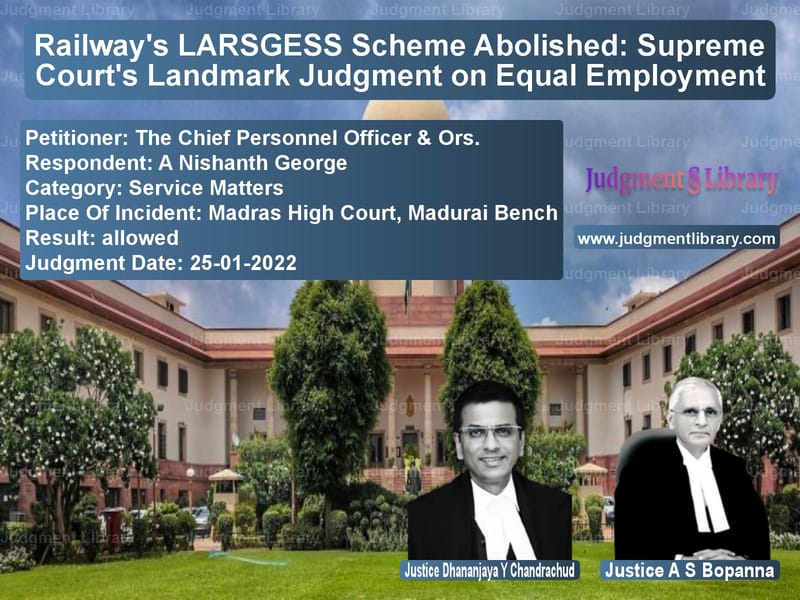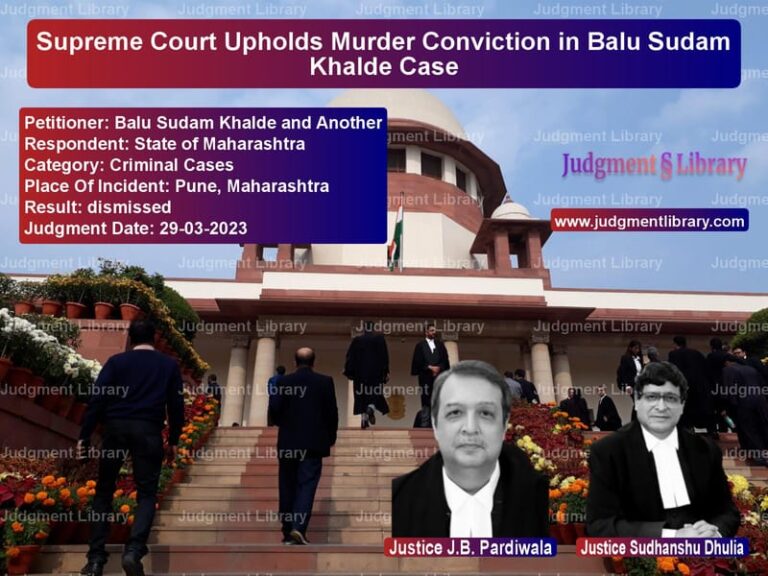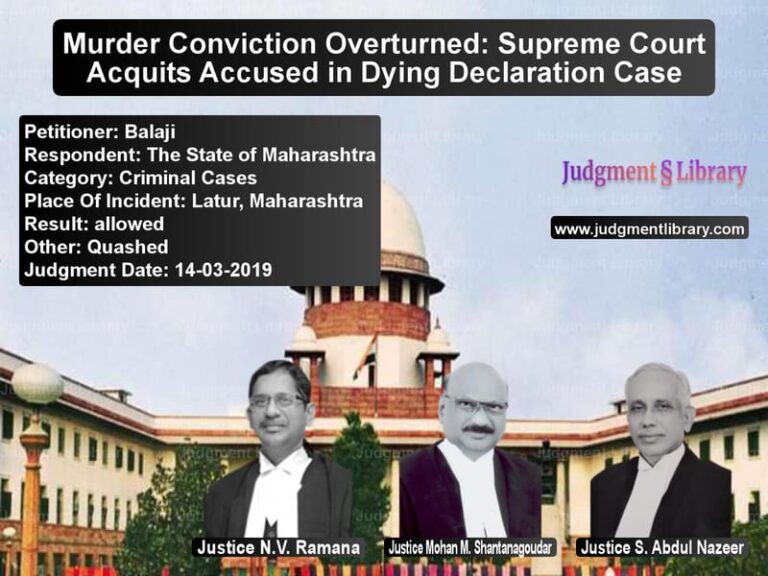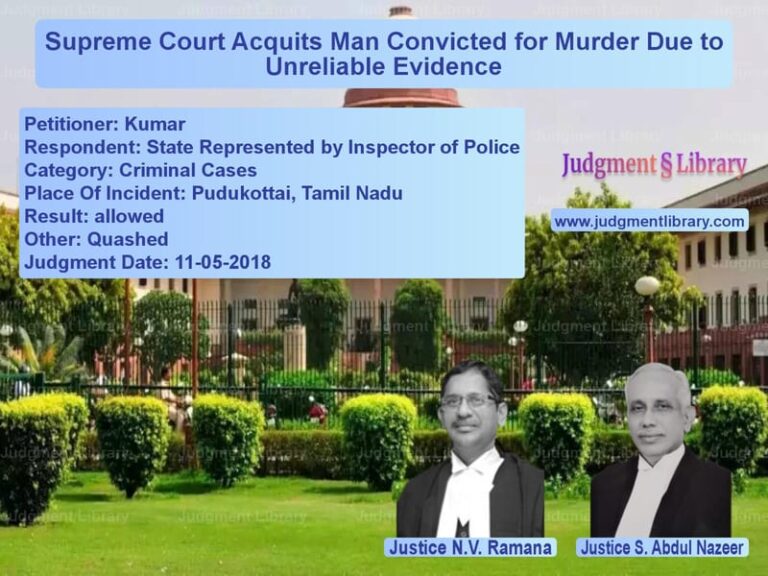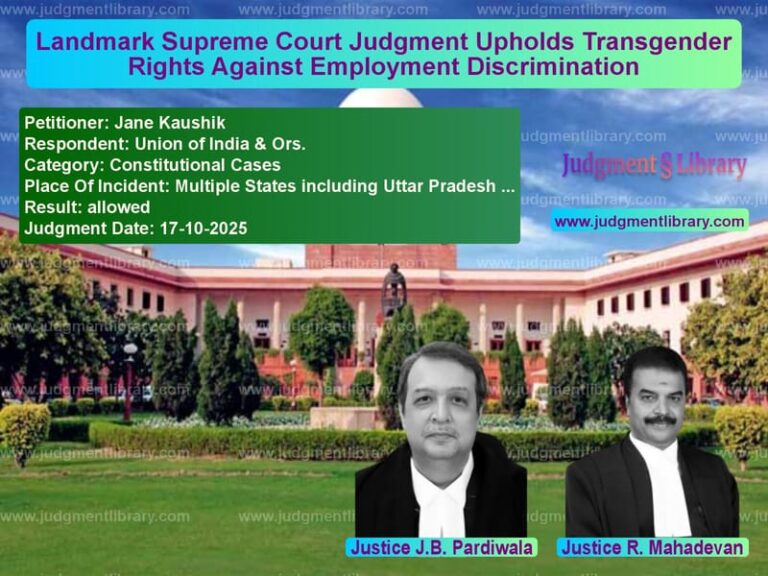Railway’s LARSGESS Scheme Abolished: Supreme Court’s Landmark Judgment on Equal Employment
The Liberalized Active Retirement Scheme for Guaranteed Employment for Safety Staff (LARSGESS) has been a contentious issue in Indian Railways for several years. Initially designed to provide voluntary retirement options for railway employees in safety-sensitive positions while ensuring employment for their wards, the scheme has faced intense legal scrutiny. The Supreme Court of India, in its landmark judgment on January 25, 2022, has brought finality to the matter, ruling on the scheme’s constitutional validity and its implications on public employment.
The ruling has significant consequences for thousands of railway employees and their wards who had applied for jobs under this scheme. This judgment highlights the judiciary’s role in ensuring equal employment opportunities and preventing nepotism in government job allocations.
Origins and Evolution of LARSGESS
The scheme originated from the Safety Related Retirement Scheme (SRRS) introduced by the Railway Board in 2004. This scheme was primarily aimed at safety-sensitive positions such as gangmen and drivers, considering that physical and mental alertness diminishes with age, potentially compromising railway safety. The scheme provided the following key benefits:
- Drivers and gangmen in the age group of 55-57 could seek voluntary retirement.
- Once an application for retirement was accepted, the employee’s ward was considered for employment.
- Eligibility for the scheme required a minimum of 33 years of service.
- The ward could only be employed in the lowest recruitment grade of the parent’s category.
- Employment under this scheme was subject to medical fitness and eligibility criteria.
In 2010, the scheme was modified and renamed LARSGESS. The new version expanded the eligibility criteria by reducing the qualifying service requirement to 20 years and lowering the retirement age to 50 years for certain safety staff. This modification led to increased participation from railway employees, but it also attracted legal challenges.
Legal Challenges to LARSGESS
As the scheme allowed automatic employment to wards of railway employees without a transparent selection process, it was challenged as being violative of Articles 14 and 16 of the Indian Constitution, which guarantee equality in public employment.
In 2016, the Punjab and Haryana High Court, in the case of Kala Singh v. Union of India, observed:
“This policy is a device evolved by the Railways to make back-door entries in public employment and brazenly militates against equality in public employment.”
The court directed railway authorities to reassess the scheme’s validity, considering the fundamental right to equal opportunity in employment.
Supreme Court’s Observations and Final Verdict
The Supreme Court, in a series of judgments, gradually dismantled the LARSGESS scheme:
January 8, 2018: First Blow to the Scheme
The Supreme Court dismissed a Special Leave Petition (SLP) challenging the High Court’s decision and directed the Railway Board to re-evaluate the scheme.
September 26, 2018: Termination by the Railway Board
Following the judicial observations, the Railway Board formally terminated the scheme, effective from October 27, 2017. The notification read:
“The scheme does not stand to the test of Articles 14 and 16 of the Constitution.”
March 6, 2019: Supreme Court Reaffirms Termination
In Union of India v. Kala Singh, a two-judge bench of the Supreme Court ruled:
“Since the Scheme stands terminated and is no longer in existence, nothing further need be done in the matter.”
January 25, 2022: Final Judgment
In the present case, the Supreme Court, led by Justices Dhananjaya Y Chandrachud and A S Bopanna, upheld the termination of the scheme, stating:
“The scheme provided an avenue of a back-door entry into the service of the railways. This would be fundamentally at odds with Article 16 of the Constitution. The Union government has with justification discontinued the scheme.”
Key Takeaways from the Judgment
- The Supreme Court upheld the termination of LARSGESS, reinforcing the principles of merit-based employment.
- All pending applications under the scheme were dismissed.
- The ruling ensures that government jobs are allocated through a fair, competitive process rather than hereditary entitlements.
Impact on Affected Employees and Their Wards
Several railway employees and their wards who had applied for employment under LARSGESS before its termination argued that they had a legitimate expectation to be recruited. However, the Supreme Court rejected this contention, ruling that no vested rights could be claimed under an unconstitutional scheme.
For employees who had voluntarily retired under the scheme but whose wards were not appointed due to procedural delays, the court maintained that they too had no claim for employment. The judgment clarifies that public employment must be governed by constitutional principles rather than legacy-based appointments.
Conclusion
The Supreme Court’s judgment on LARSGESS is a landmark ruling reinforcing the principles of fairness and equal opportunity in public employment. By striking down a scheme that facilitated hereditary employment in the railways, the court has upheld the constitutional mandate of Articles 14 and 16.
With this decision, the judiciary has once again emphasized the importance of merit-based recruitment in government services, ensuring that job opportunities are accessible to all eligible candidates rather than being reserved for a select few based on lineage.
Petitioner Name: The Chief Personnel Officer & Ors..Respondent Name: A Nishanth George.Judgment By: Justice Dhananjaya Y Chandrachud, Justice A S Bopanna.Place Of Incident: Madras High Court, Madurai Bench.Judgment Date: 25-01-2022.
Don’t miss out on the full details! Download the complete judgment in PDF format below and gain valuable insights instantly!
Download Judgment: the-chief-personnel-vs-a-nishanth-george-supreme-court-of-india-judgment-dated-25-01-2022.pdf
Directly Download Judgment: Directly download this Judgment
See all petitions in Employment Disputes
See all petitions in Recruitment Policies
See all petitions in Public Sector Employees
See all petitions in Termination Cases
See all petitions in Judgment by Dhananjaya Y Chandrachud
See all petitions in Judgment by A. S. Bopanna
See all petitions in allowed
See all petitions in supreme court of India judgments January 2022
See all petitions in 2022 judgments
See all posts in Service Matters Category
See all allowed petitions in Service Matters Category
See all Dismissed petitions in Service Matters Category
See all partially allowed petitions in Service Matters Category

